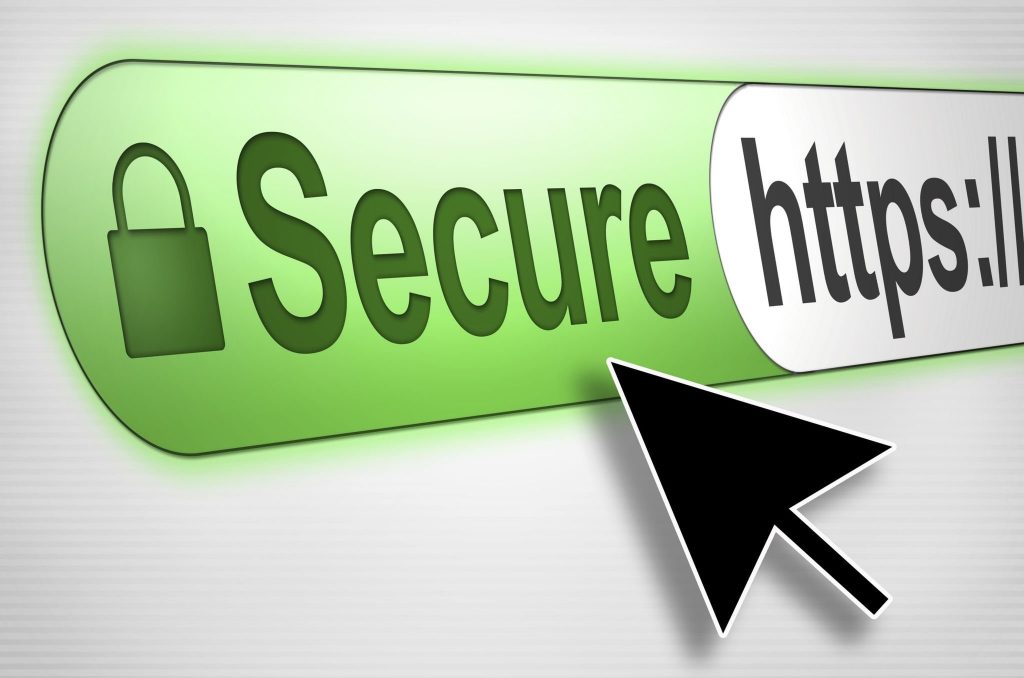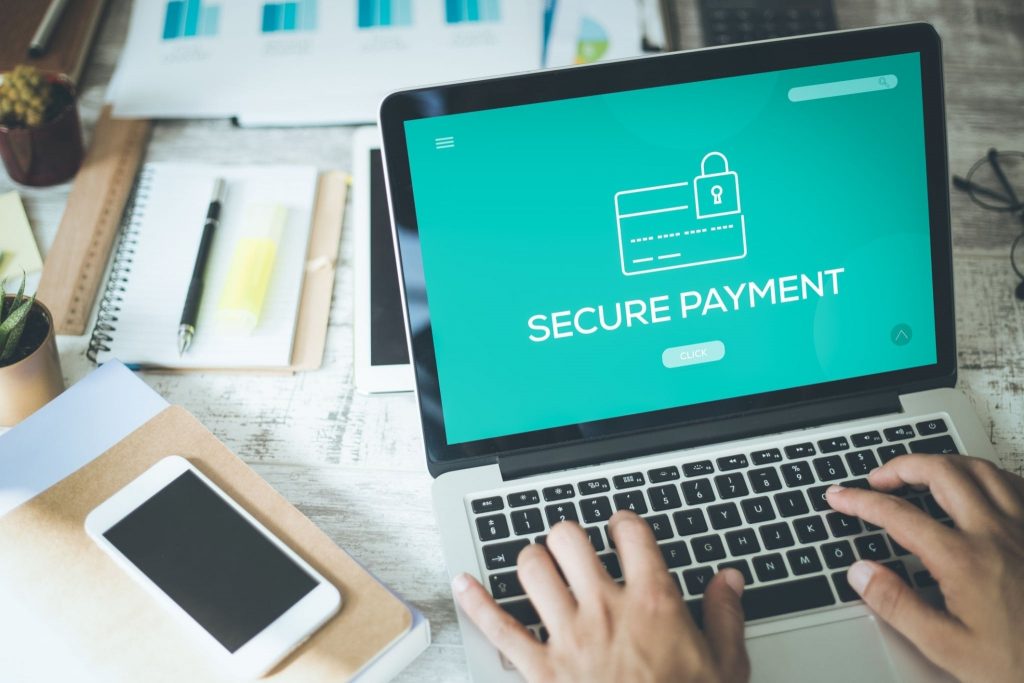Online shopping has revolutionized the way we buy goods and services. With just a few clicks, we can purchase anything from groceries to gadgets, and have it delivered right to our doorstep.
However, the convenience of online shopping comes with its risks. One of the most significant concerns is the rise of fake shopping websites that scam unsuspecting customers.
These websites mimic legitimate shopping sites and deceive customers into giving away their money or personal information.
To avoid falling prey to these fake websites, it’s important to know how to identify legitimate shopping websites.
This blog post will provide you with tips on how to differentiate between legit and fake websites. By the end of this post, you’ll have a better understanding of what to look out for when shopping online and how to protect yourself from online shopping scams.

Check the Website’s URL
Checking the website’s URL is one of the easiest ways to identify a fake shopping website. Scammers often create fake websites that look identical to legitimate ones, but with slight variations in the URL.
For example, they might replace a letter in the domain name or add a hyphen or underscore to make it look like the real thing. Therefore, it’s Important to double-check the URL before making a purchase.
To check the website’s URL, start by examining the domain name. The domain name is the main part of the URL and is located between “http://” or “https://” and the first forward slash (“/”). For example, in the URL “https://www.example.com/products,” the domain name is “www.example.com.”
Next, look for any spelling errors or slight variations in the domain name. For instance, if you’re shopping on a website called “www.shopsmart.com,” a fake website might have a domain name like “www.shopsrnart.com” or “www.shopsmarrt.com.”
These slight variations can be difficult to spot, so it’s essential to pay close attention to the spelling.
Another thing to look out for is the HTTPS protocol. HTTPS indicates that the website has an SSL certificate and uses encryption to secure the data transmitted between the website and the user’s browser.
This encryption is critical, especially when entering sensitive information like credit card details. However, scammers can also obtain SSL certificates for their fake websites, so it’s essential to look out for the other red flags mentioned in this blog post.

Look for Trust Signals
Trust signals are indicators that a website is legitimate and can be trusted with sensitive information. These signals can include visual cues, such as security logos, SSL certificates, and trust badges, as well as non-visual cues, such as customer testimonials and online reviews.
One of the most important trust signals to look out for is an SSL certificate. An SSL certificate is a digital certificate that verifies the identity of a website and enables encryption of data transmitted between the website and the user’s browser.
Websites with SSL certificates have URLs that start with “https://” instead of “http://”. Additionally, you may see a green padlock icon or a “secure” label in the browser’s address bar.
This indicates that the website is secure and that any data transmitted between the website and the user’s browser is encrypted.
Another trust signal to look for is security logos. These logos indicate that the website has undergone a security assessment by a third-party security provider and has passed the necessary checks. These logos can include McAfee, Norton Secured, and TRUSTe.
Customer testimonials and online reviews can also be a great way to determine whether a website is legitimate. Look for websites that display customer reviews prominently and have a high overall rating.
However, it’s important to note that fake reviews are also prevalent, so use your best judgment and read the reviews carefully.

Where to Find Real Customer Reviews?
Customer reviews provide insight into the quality of the products and services offered by the website, as well as the overall customer experience.
Here are some examples of where to find real customer reviews:
- Review sites: There are many review sites dedicated to reviewing and rating online shopping websites. These sites aggregate reviews from multiple sources and provide an overall rating for the website. Some popular review sites include Trustpilot, Sitejabber, and ResellerRatings.
- Social media: Social media platforms like Facebook, Twitter, and Instagram are also great sources of customer reviews. Many businesses have social media pages where customers can leave reviews and comments. Additionally, you can search for the name of the shopping website on social media and look for reviews and comments from other customers.
- Forums: Online forums are another excellent source of customer reviews. There are many forums dedicated to discussing online shopping websites, where customers can share their experiences and opinions. Some popular forums include Reddit and ConsumerAffairs.
When reading customer reviews, it’s important to use your best judgment and read a variety of reviews. Look for patterns in the reviews, and pay attention to both positive and negative reviews.
Check for Contact Information
One way to determine the legitimacy of a shopping website is to check for contact information. Legitimate websites typically provide clear and easily accessible contact information, which can include a physical address, phone number, and email address.
Here are some things to consider when checking for contact information:
- Physical address: A legitimate shopping website should provide a physical address, which can help you verify that the company exists and is located in a real place. Look for a street address, city, state, and zip code. You can also use online maps and directories to verify the location.
- Phone number: A legitimate shopping website should provide a phone number, which you can use to call and verify that the company is real and operates a customer service department. Be wary of websites that only provide a form or email address for contact.
- Email address: A legitimate shopping website should also provide an email address, which you can use to contact the company with any questions or concerns. Look for a professional email address, such as info@website.com, rather than a generic email address like Gmail or Yahoo.
- Contact page: Look for a dedicated contact page on the website, which should provide all of the contact information in one place. A legitimate shopping website should also provide a clear and easy-to-use contact form that allows you to send a message directly to the company.
- Customer service: A legitimate shopping website should have a customer service department that is easily accessible and responsive to customer inquiries. Look for a phone number or email address specifically for customer service, and be wary of websites that only provide a generic contact form.

Check for Payment Options
Legitimate websites typically offer a variety of payment options that are widely accepted and provide a secure way to pay for your purchases.
Here are some things to consider when checking for payment options:
- Accepted payment methods: A legitimate shopping website should accept a variety of payment methods, such as credit cards, debit cards, PayPal, and other reputable payment services. Look for recognizable logos and symbols of trusted payment services on the website.
- Secure payment processing: A legitimate shopping website should use a secure payment processing system, such as SSL (Secure Sockets Layer) encryption or other secure payment gateways, to protect your personal and financial information during the transaction.
- Payment verification: A legitimate shopping website may require you to verify your payment method by providing additional information, such as a billing address, security code, or other verification methods. This helps protect against fraudulent activity and ensures that the payment is legitimate.
- Refund and return policies: A legitimate shopping website should have clear and transparent refund and return policies, which can help protect you in case of a problem with your purchase. Look for information on how to return items, the timeline for returns, and any associated fees or costs.
- Payment confirmation: After making a purchase on a legitimate shopping website, you should receive a confirmation of your payment, which can include an email or a confirmation page on the website. If you do not receive a confirmation, or if the confirmation looks suspicious or unprofessional, it may be a red flag.
Use a Website Checker Tool
There are several online tools available that can help you evaluate the security and trustworthiness of a website. These tools can analyze the website for potential risks and vulnerabilities, such as malware, phishing, and spam.
Here are some things to consider when using a website checker tool:
- Reputation score: Website checker tools may provide a reputation score or rating for the website, which can give you an overall idea of the website’s trustworthiness. Look for tools that use a variety of sources to generate the reputation score, such as user reviews, domain age, and historical data.
- Security analysis: Website checker tools can analyze the website for potential security risks, such as malware, viruses, and phishing. Look for tools that provide detailed information on the security analysis, including the types of risks and the severity of the risk.
- Domain information: Website checker tools can provide information on the website’s domain, such as the registration date, owner information, and hosting provider. This information can help you verify the legitimacy of the website and the company behind it.
- Blacklist status: Website checker tools can check whether the website is on any blacklists or has been reported for suspicious or fraudulent activity. Look for tools that provide up-to-date information on blacklist status and any associated risks.
While there are several objective factors to consider when evaluating the legitimacy of a shopping website, it’s also important to trust your gut feeling.
Your intuition can often be a powerful tool in identifying potential scams or fraudulent websites.
When you visit a website for the first time, pay attention to your initial impressions. Pay attention to how the website makes you feel.
Does the website look professional and well-designed, or does it look cheap and unprofessional?
If something feels off or doesn’t seem right, it’s worth investigating further.
Also, be cautious of websites that offer extremely low prices or other offers that seem too good to be true. Scammers often use these tactics to lure in unsuspecting shoppers.
By trusting your intuition and using the tips mentioned above to evaluate the website, you can help protect yourself against scams and fraudulent websites.
What to do if you ordered something from a fake website?
If you ordered something from a fake website, there are a few steps you can take to protect yourself and potentially recover your money:
- Contact your bank or credit card company: If you paid for your order with a credit card or debit card, contact your bank or credit card company immediately to report the fraudulent charge. They may be able to reverse the charge and issue you a refund.
- File a complaint with the FTC: You can file a complaint with the Federal Trade Commission (FTC) to report the fraudulent website and potentially help prevent others from falling victim to the same scam. The FTC can also provide guidance on what to do next and how to protect yourself from future scams.
- Check your computer for malware: If you entered personal information or payment details on the fake website, your computer may have been infected with malware. Run a malware scan on your computer using reputable antivirus software to ensure that your computer is secure.
- Change your passwords: If you used the same password on the fake website as you do for other accounts, change your password immediately to prevent hackers from accessing your other accounts.
- Be cautious in the future: Be cautious when shopping online in the future and only shop on reputable websites. Before making a purchase, research the website to ensure that it’s legitimate and trustworthy.
So, if you ordered something from a fake website unknowingly, it’s important to take immediate action to protect yourself and potentially recover your money.
Related Posts:
- Exposing the Real Person behind a Fake Facebook Account
- 10 tips for staying safe online – Internet safety tips
- The Benefits of Strategic Technology Consulting for eCommerce
- Is it Safe to Keep your Bitcoins in Crypto Exchanges
- How to find & trace an IP address of a fake Facebook account?
- Don’t Get Hacked: Tips to Protect Your Cryptocurrency from Hackers
- Privacy Concerns of ChatGPT: Real-Life Examples of Data Misuse
